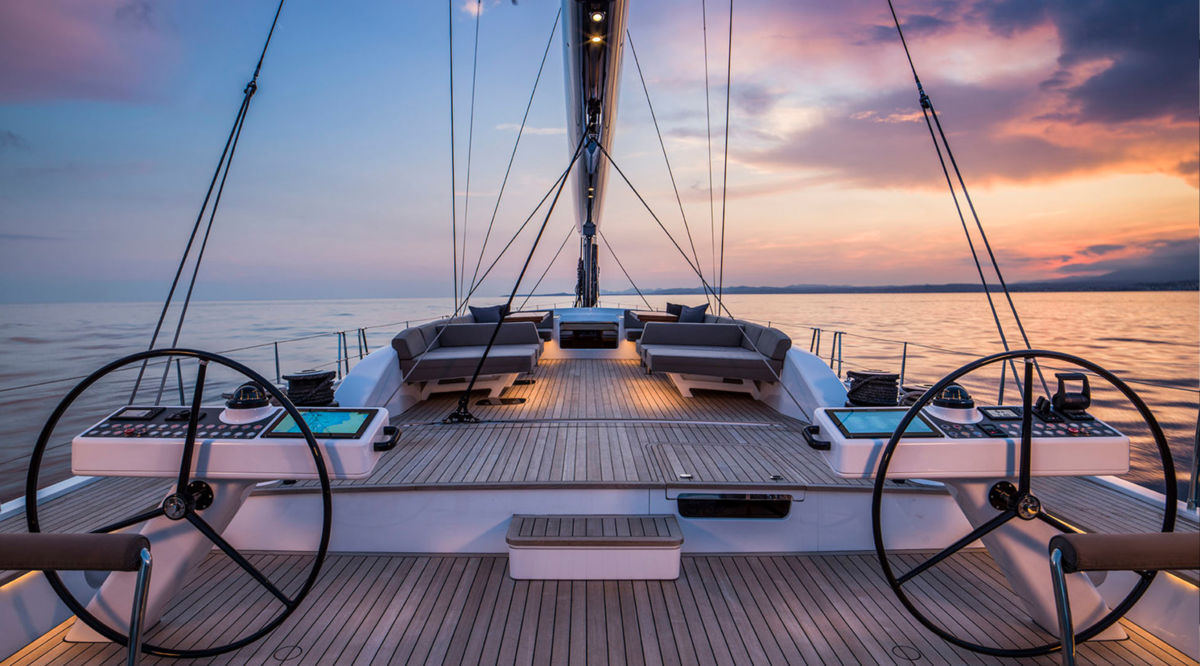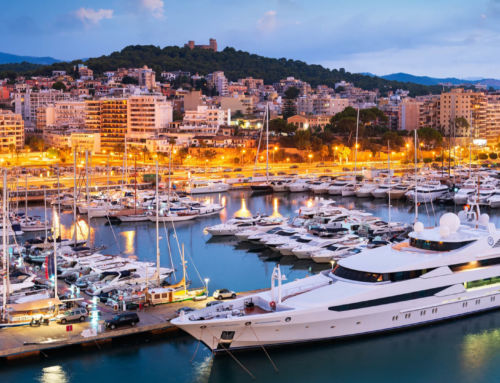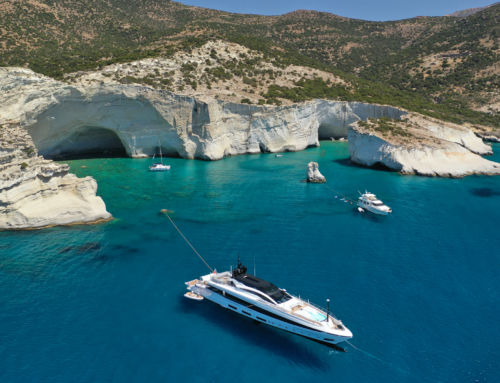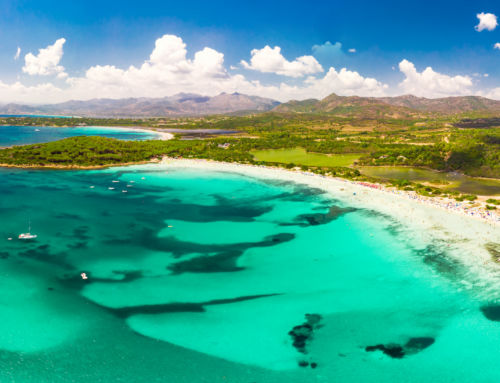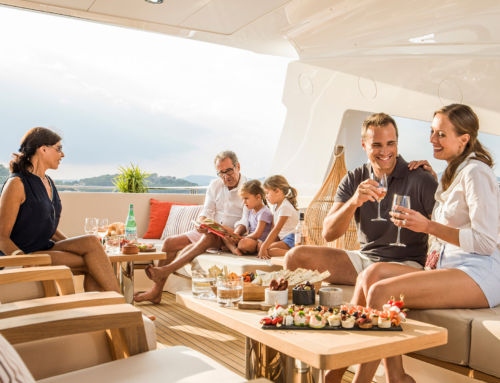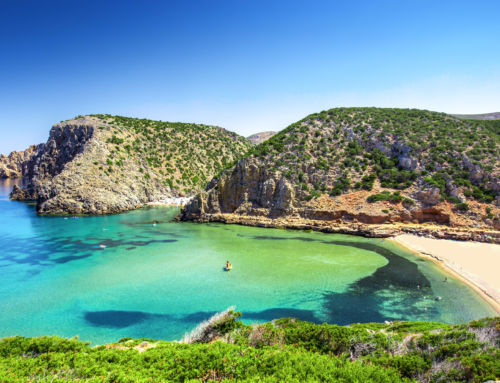We speak to an internationally renowned Superyacht Photographer, about how to get the best out of your holiday photography…
How is taking photos on a charter yacht different to a land-based holiday and what do people need to consider?
Your subject is always moving as you’re on a boat, allowing you to experiment with angles and sunlight as opposed to being on land where your object is fixed so you are more limited. Early morning and late in the evening are my favourite times to shoot. Early morning light is great for reflections and calm tranquil water – a total joy to photograph!
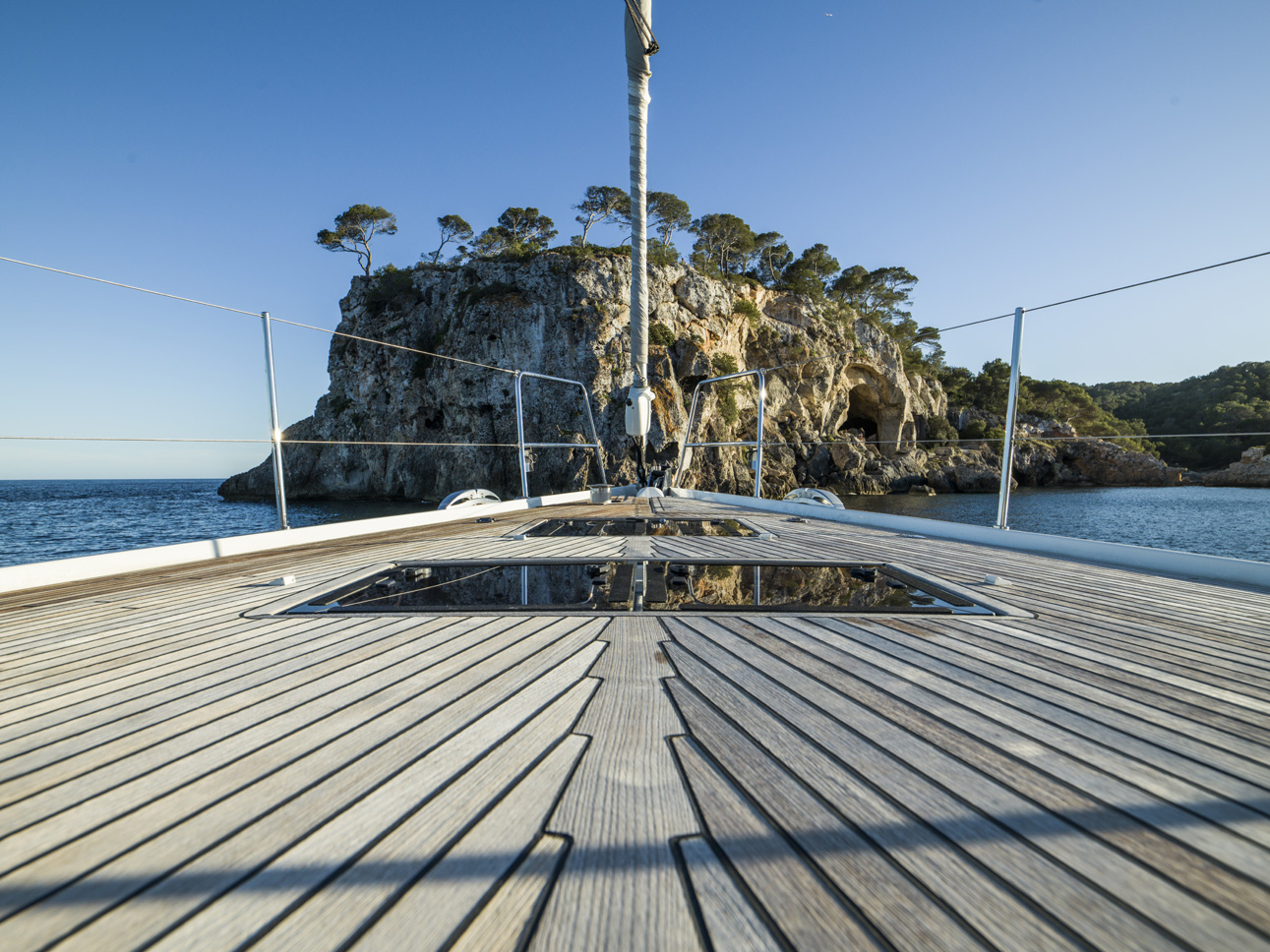
What do you think is the most common mistake people make when taking holiday snaps?
It’s all about knowing how to get the most out of your camera in any given situation from an iPhone to a DSLR.
There is a common misconception in photography of never shooting anything that is backlit (has the sun behind it). Given the choice I would rather shoot into the sun as I love the contrast and mood you get from backlit images.
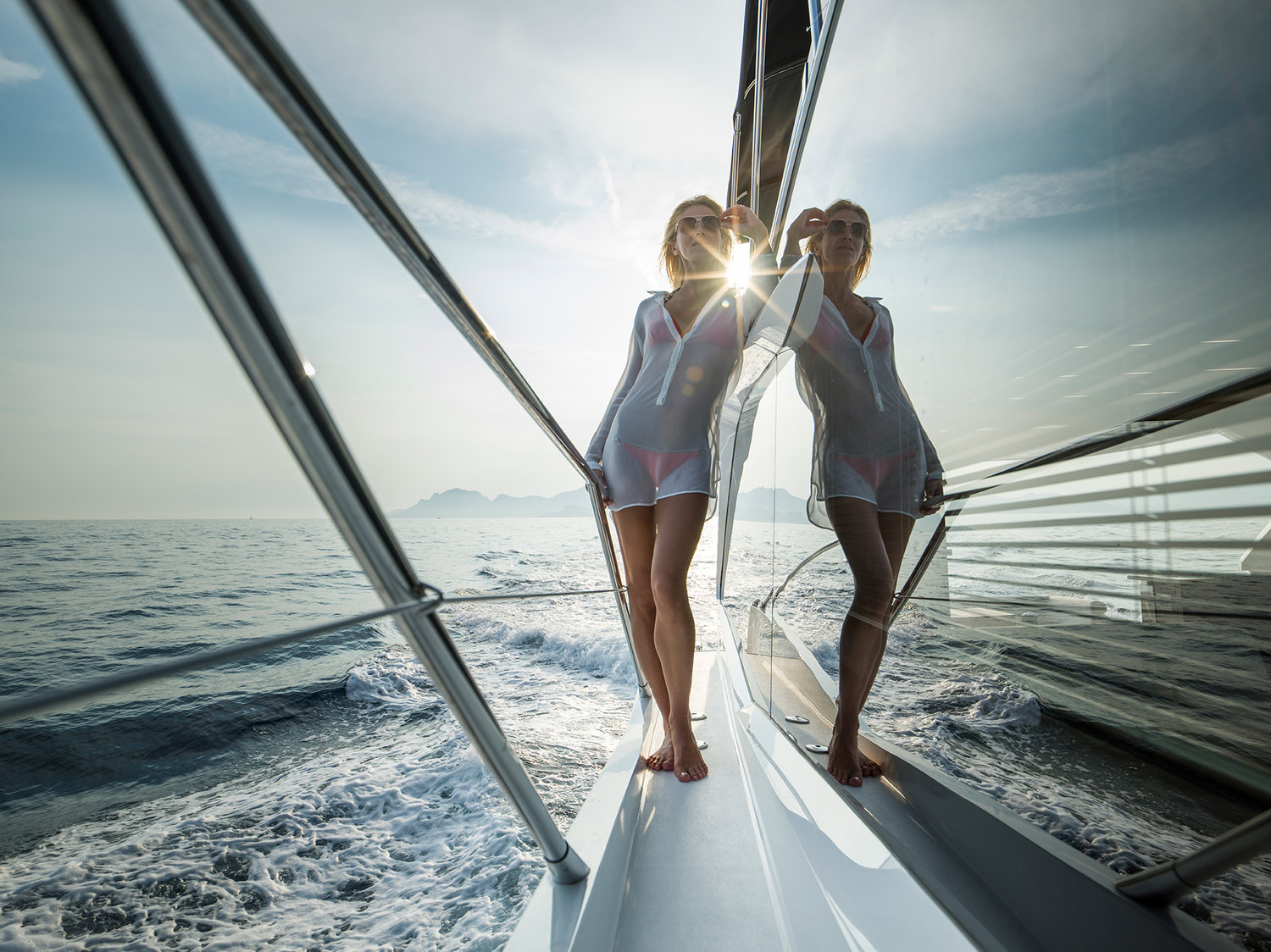
(example of shooting straight into sunlight)
It may be stating the obvious but another commonly made mistake is not charging your batteries up (or taking a spare). You’ll be kicking yourself if you have a great shot set up in front of you, a camera but no battery.
People often either take too many shots or too few. It’s dangerous to take one photo and think you’ve got it, especially with people, as there will always be someone blinking, laughing, or sneezing so in that respect better to take a few more as you will most likely get one great one and delete 20. Then there are those who take hundreds, if not thousands without giving the shot any thought, in the hope there will be one or two good ones. In both cases, all that’s required is a small amount of thought as to why you are pressing the button. Ask yourself: ‘Am I about to get the best possible shot I can?’. There will be two outcomes, either you won’t take it or you’ll adjust your positioning or framing slightly. There is nothing worse than getting home after your holiday and sorting through endless folders of images and the best one is ruined by someone who had their eyes closed!
Using flash during the daytime is a great way to capture the colour of your subject without being washed out by the sun’s glare. This is especially good for portraits in the sunshine. If you don’t have a powerful flash, stand your subject near a flat white surface on the boat to act as a reflector, this will help lift the shadows for a more flattering portrait.
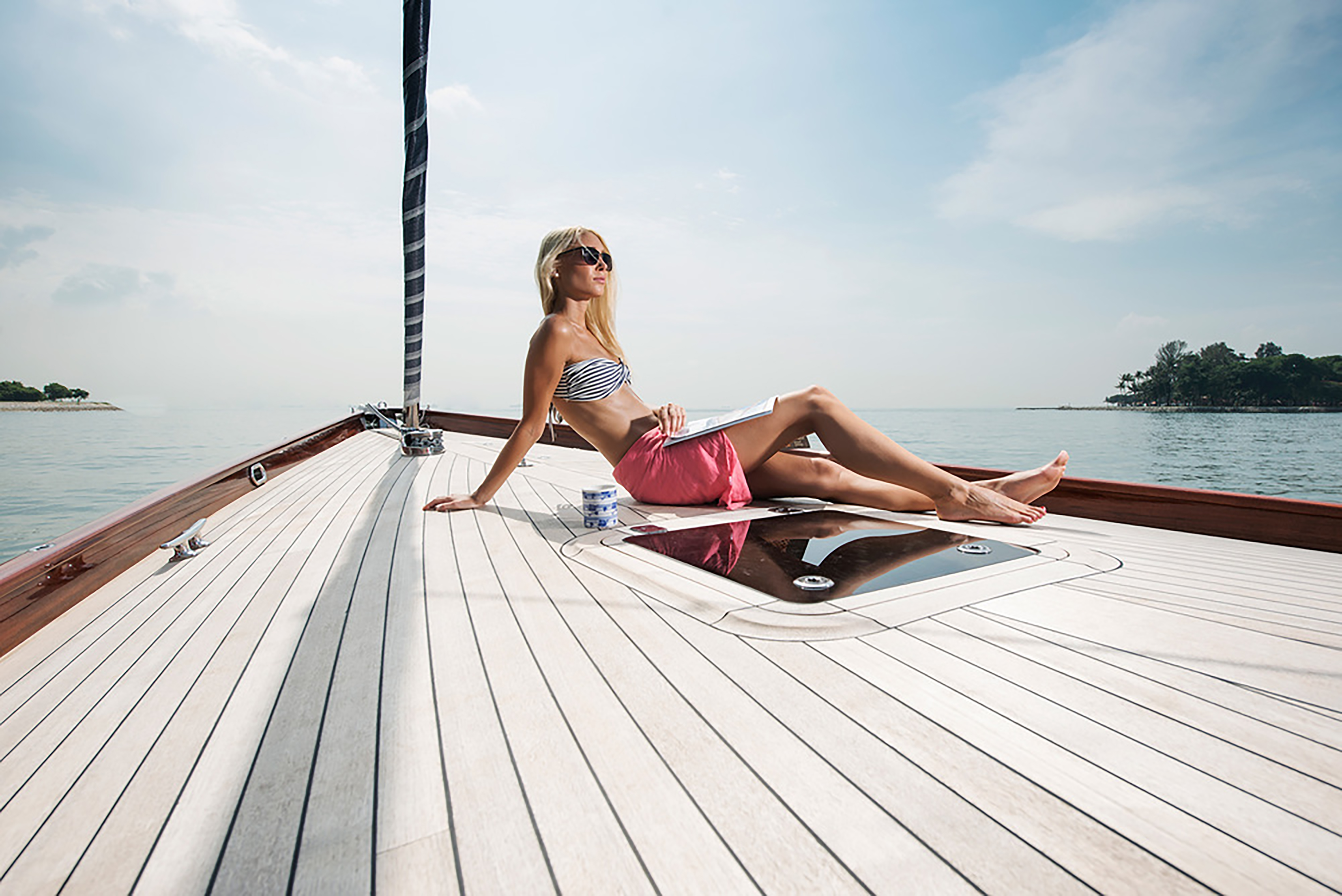
(example of using the flash in daylight)
Last but not least don’t be afraid to get wet – there is a whole world to be photographed under the surface! There are many affordable waterproof cameras or camera cases available today. Seeing as water is a fairly integral part of your holiday, make the most of it. Capturing the whole experience of your charter both on and in the water will make the memories last longer, and make for a more dynamic mix of images. It is very satisfying getting ‘that perfect’ splash shot…
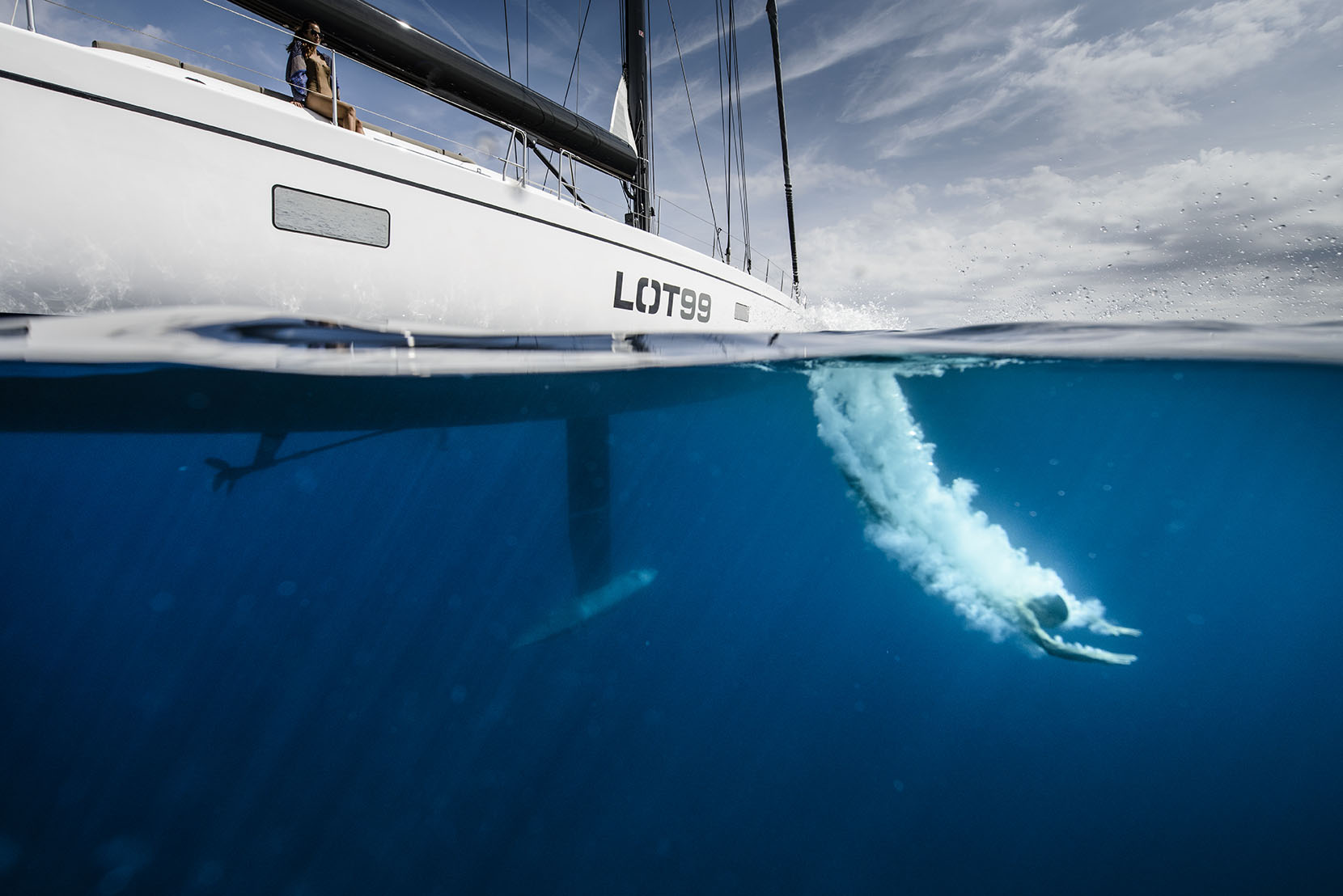
(split level photography taken in the water!)
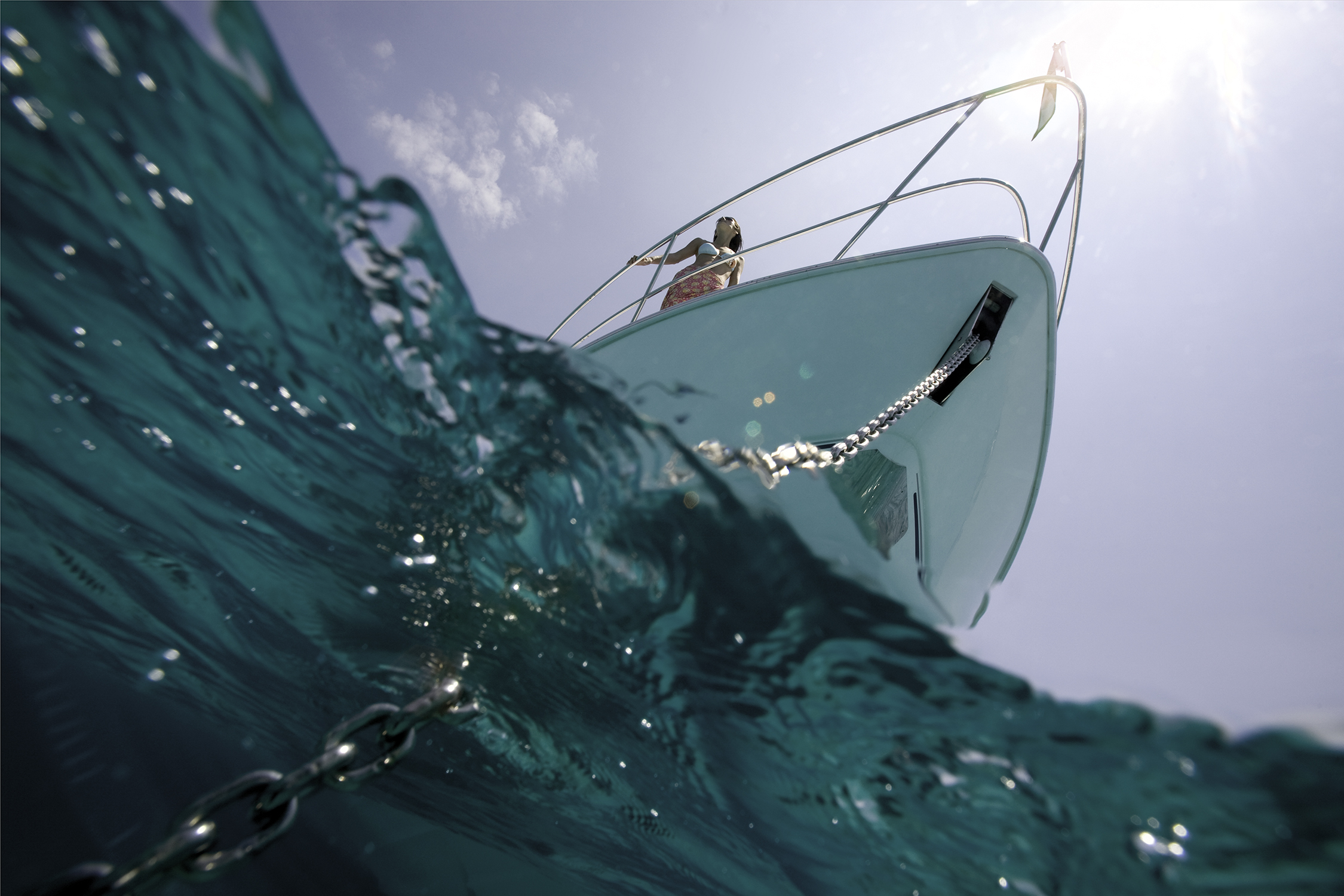
What is the best camera for beginners to get the most out of their stunning surroundings?
The best camera is the one you have on you at the time. Don’t buy a heavy bulky camera that you won’t want to carry around with you, buy one that you’d be happy to take with you anywhere and isn’t a burden. Key things to look out for are wide optical zooms and fast maximum apertures.
Here are a few models I would suggest going for:
Olympus Tough TG-5 – Waterproof and rugged – Fast aperture and nice wide-angle lens. Optical zoom, not the most powerful.
Leica V-Lux (Typ 114) Superzoom Bridge Camera – deluxe model with a very classy finish and impressive optical zoom lens. A discerning choice.
Panasonic LX100 – Powerful and classy compact camera with manual settings
Nikon D850 SLR – Probably the best DSLR ever produced, and gives you access to the best range of lenses on the market.
What’s your advice on taking actions shots?
Make sure the camera is set to continuous focus to constantly track the action. Use sport mode if the camera has one, if not use shutter priority and a shutter speed of above 500th of a second.
Try to anticipate the action and track it smoothly, and remember, the best zoom is often your feet! If you can get any closer to the action (safely of course) then do so.
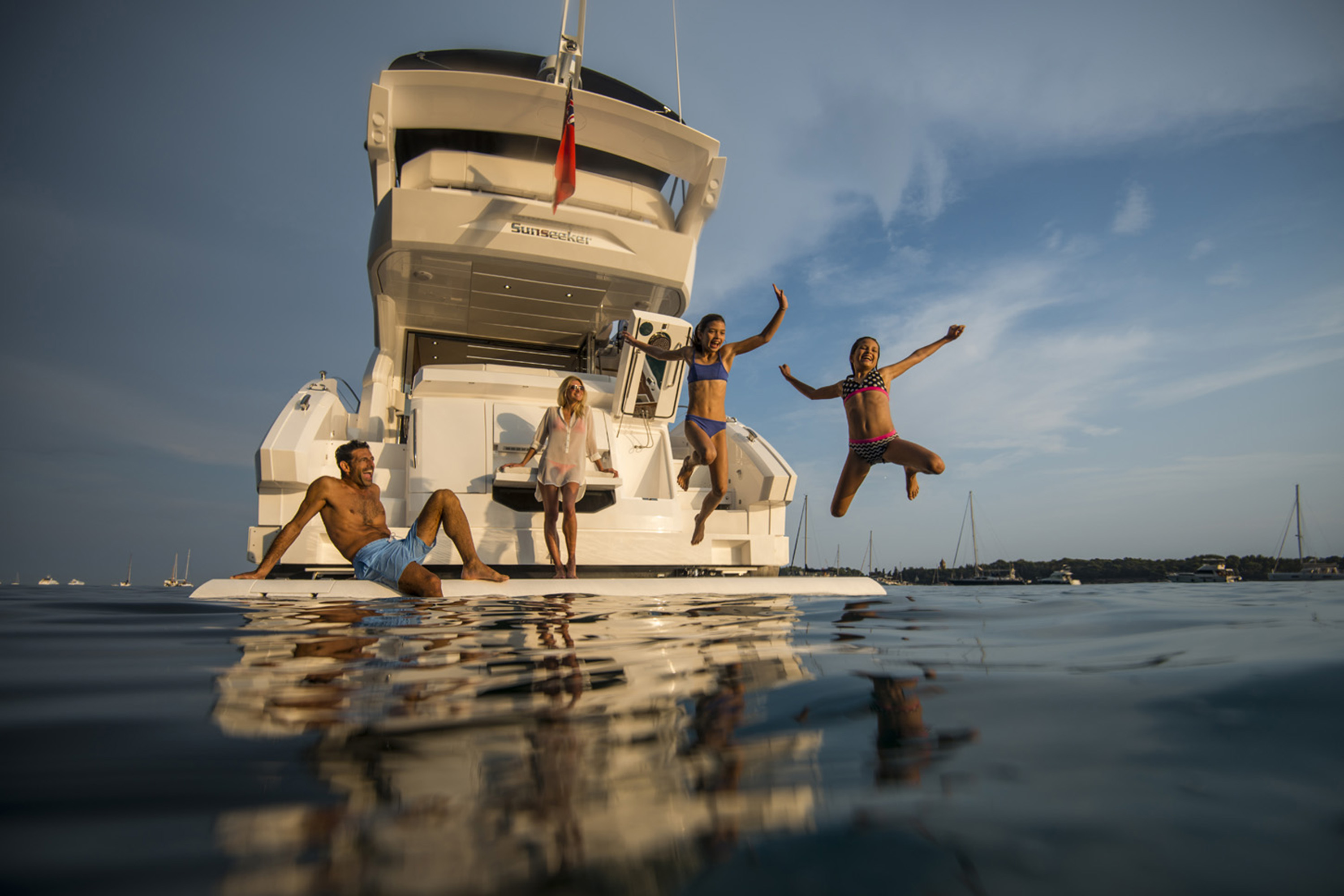
(follow the action!)
What settings are a must to understand on the camera?
Don’t be afraid of manual. There are only three main settings whether you have never picked up a camera before or are an aspiring professional:
– Shutter speed
– Aperture
– ISO sensitivity (film speed)
On a bright day I would advise leaving the ISO at a low number (100-200) and working the shutter speeds and aperture; high shutter speed for action and small aperture for depth of field. One marvellous advent of digital technology is that it is almost free to experiment (apart from the investment of your time), so don’t be afraid to try different settings and review the results, learning from your mistakes is often more valuable than hours reading manuals.
Smartphone cameras are pretty impressive nowadays and usually more readily accessible than large cameras. Do you ever take pictures on your phone or do you use your camera religiously?
Any camera is only as good as the person holding it. I would rather have an iPhone on me to take a photo than no camera at all. Don’t think that just because you are holding a phone and not a camera your photo will be of less value. Think about the same principles of composition whatever the equipment.
What is the best time of day to take the most impressive shots?
Undoubtedly my favourite time of day is when the sun’s last rays are hanging in the sky, the colours are subtle, often muted and diffused. It is the time when the light changes the quickest, photographs unfold and disappear within seconds. I really relish the challenge of capturing those brief moments.
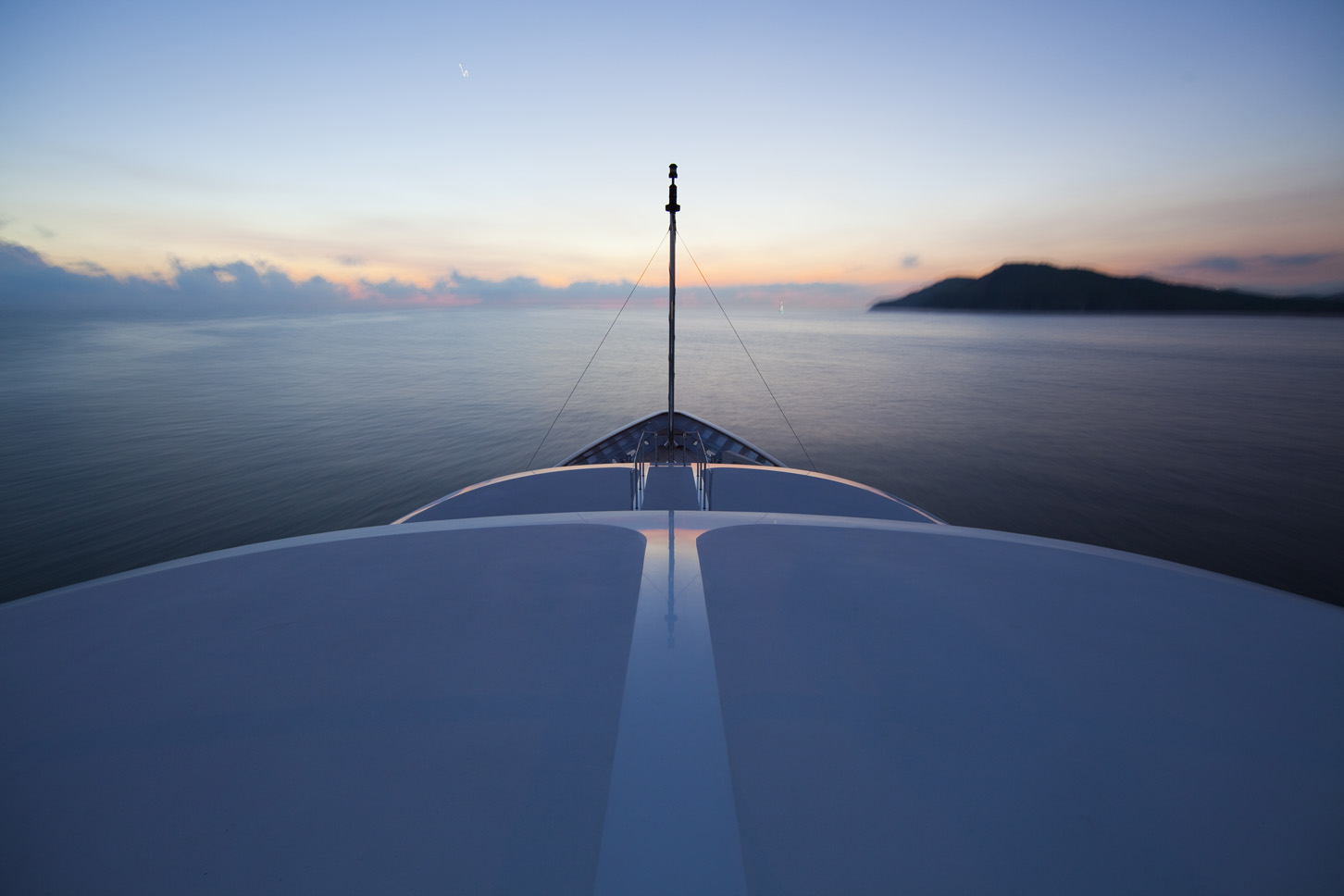
(lasting rays)
Is the horizon an important factor in the photograph?
I believe, that unless very deliberately skewed the horizon should be perfectly straight. It can be the difference between a good picture and a great picture, it shows the level of care and thought that’s gone into the image. There are levelling settings on practically all cameras and phones so no excuses and a very quick tweak in whatever software you use will correct any imperfections.
Should you always shoot with the sun in a certain position?
Experiment with the suns angles and see how your images change as you move around. Just remember to try shooting into the sun for the most dramatic results.
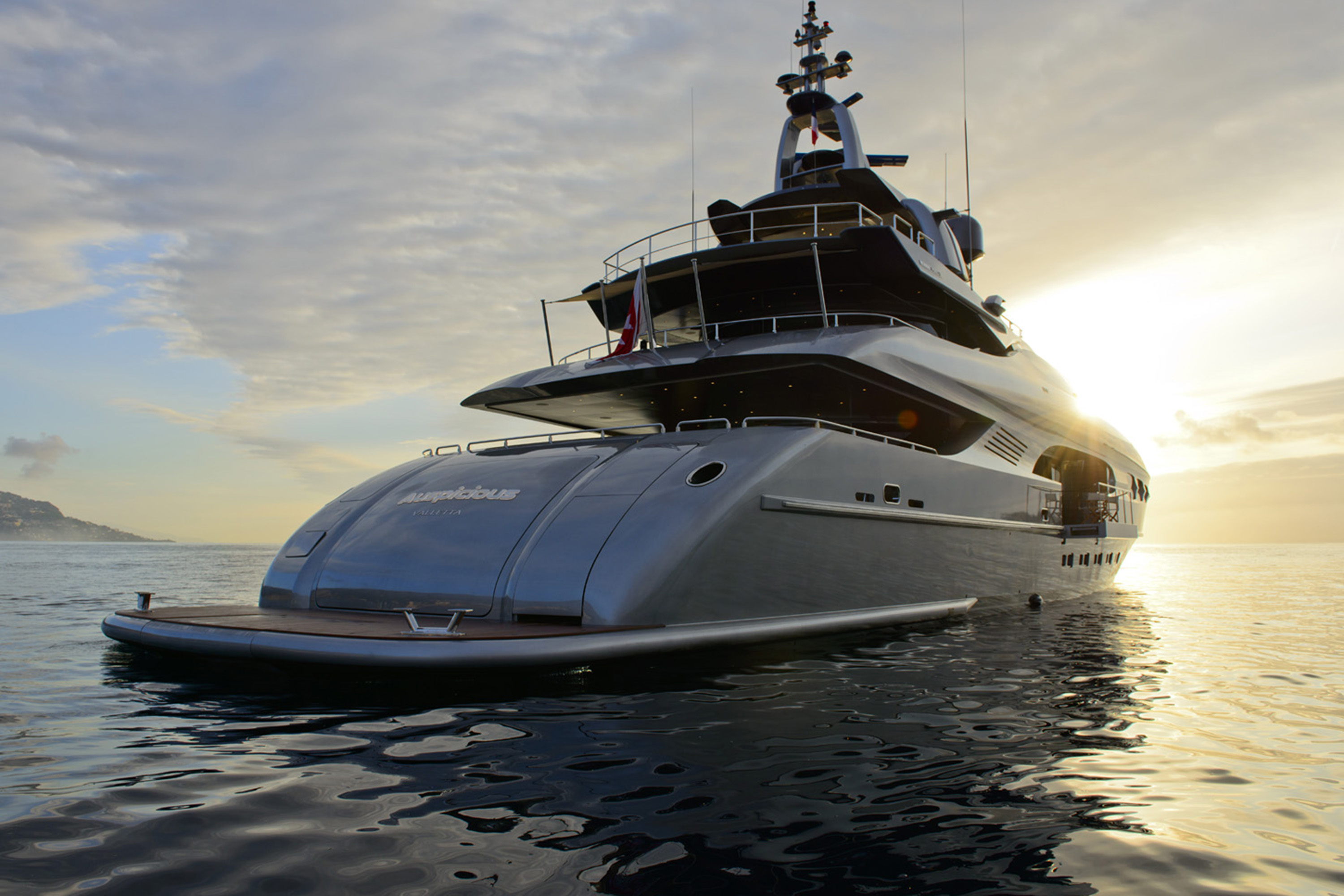
Top tips:
- It’s a great idea to pick out your best shots and get a photo book made up. No point in having all of these great shots sitting on your computer where no-one can enjoy them.
- If you get any salt water on your camera clean it with an alcohol solution to neutralise any corrosion.
- If you get your camera totally soaked turn it off and remove the battery immediately. Clean it again with an alcohol solution and leave it to dry out completely. If you try to turn it on too soon you risk short-circuiting the camera.
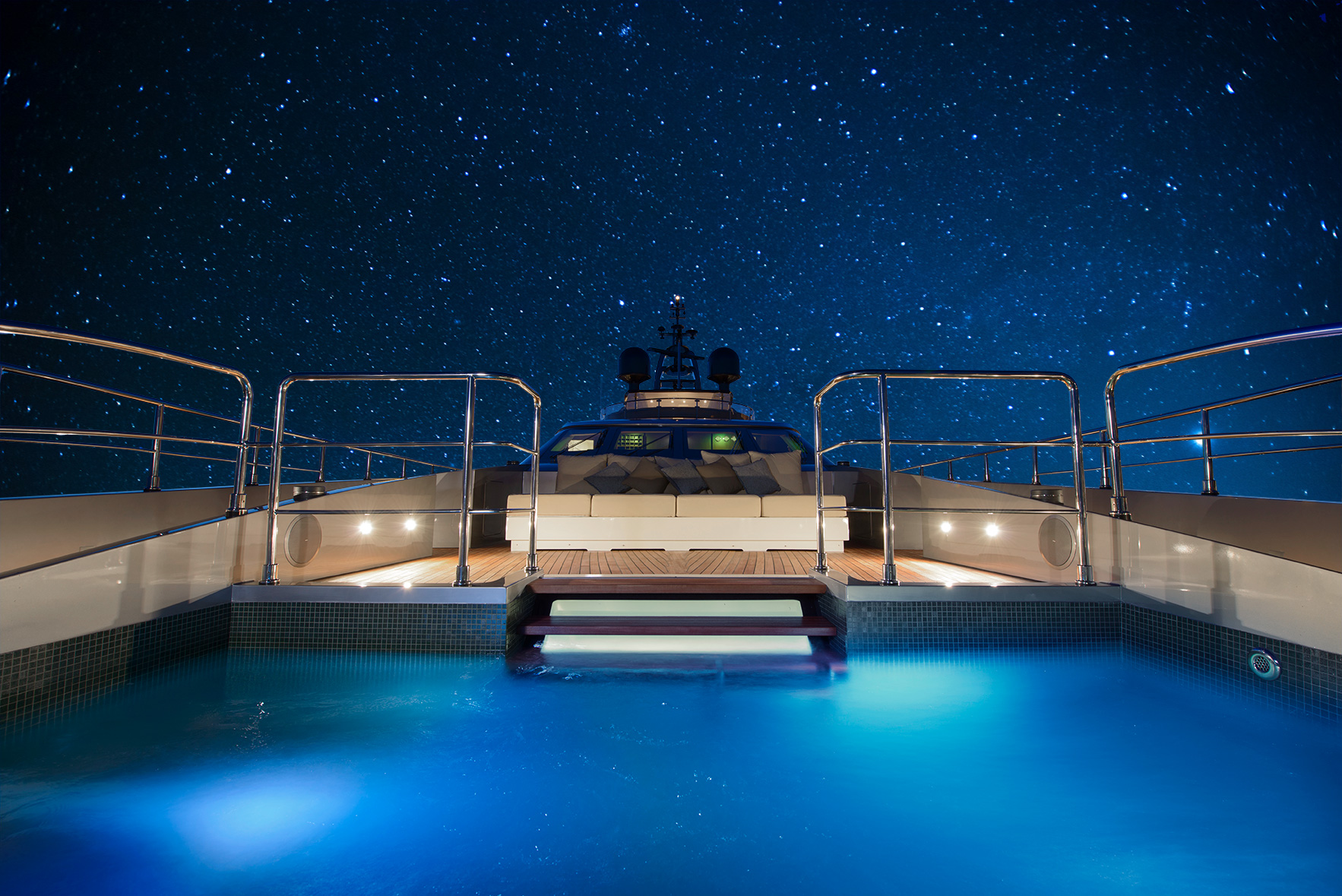
Get in touch to choose the perfect charter yacht to try out your new photography skills: debel@swisspath-yachting.com or call +41 44 454 26 26.

